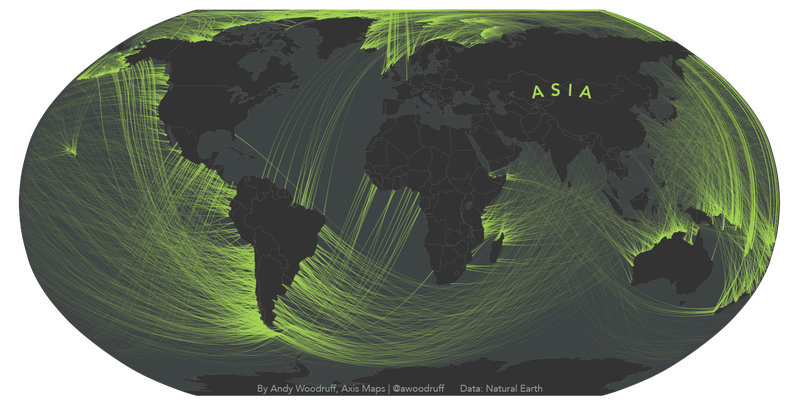Clik here to view.

As a kid I spent a lot of time on the Maryland shore. Squinting out across the endless blue expanse, I could have sworn I saw the edge of Portugal once or twice. I was shocked recently to learn that my childhood imagination had it all wrong. (Truly, a first.) With telescopic vision, I wouldn’t see the coast of Europe. I’d see South America.
It’s easy to forget that we live on a curved ball—and some people never seem to have learned it
Coastlines are ragged, messy things, twisting and turning every which way. As a result, what’s “directly across the ocean” from you depends on where you’re standing on a rather fine scale. It also depends on the curvature of the Earth, as Woodruff explains:
If you can detach the concept of “direction” from the concept of east and west, and look at globes and other map projections, it’s easy enough to picture. The shortest, straightest line on a sphere (let’s call the Earth a sphere even though it technically isn’t) is a great circle arc, not something like a line of latitude.
So if we want to know what’s truly straight across the ocean from a given coastline point, we need to see what direction the coast faces at that point, then draw a great circle in that direction and see what it runs into.
Wondering what lies across your local shoreline? Check it out on one of the maps below—each one indicates views to the labeled continent. Perhaps you’ll be surprised by what you find.
Clik here to view.

Clik here to view.

Clik here to view.

Clik here to view.

Clik here to view.

Clik here to view.

[h/t Flowing Data]
